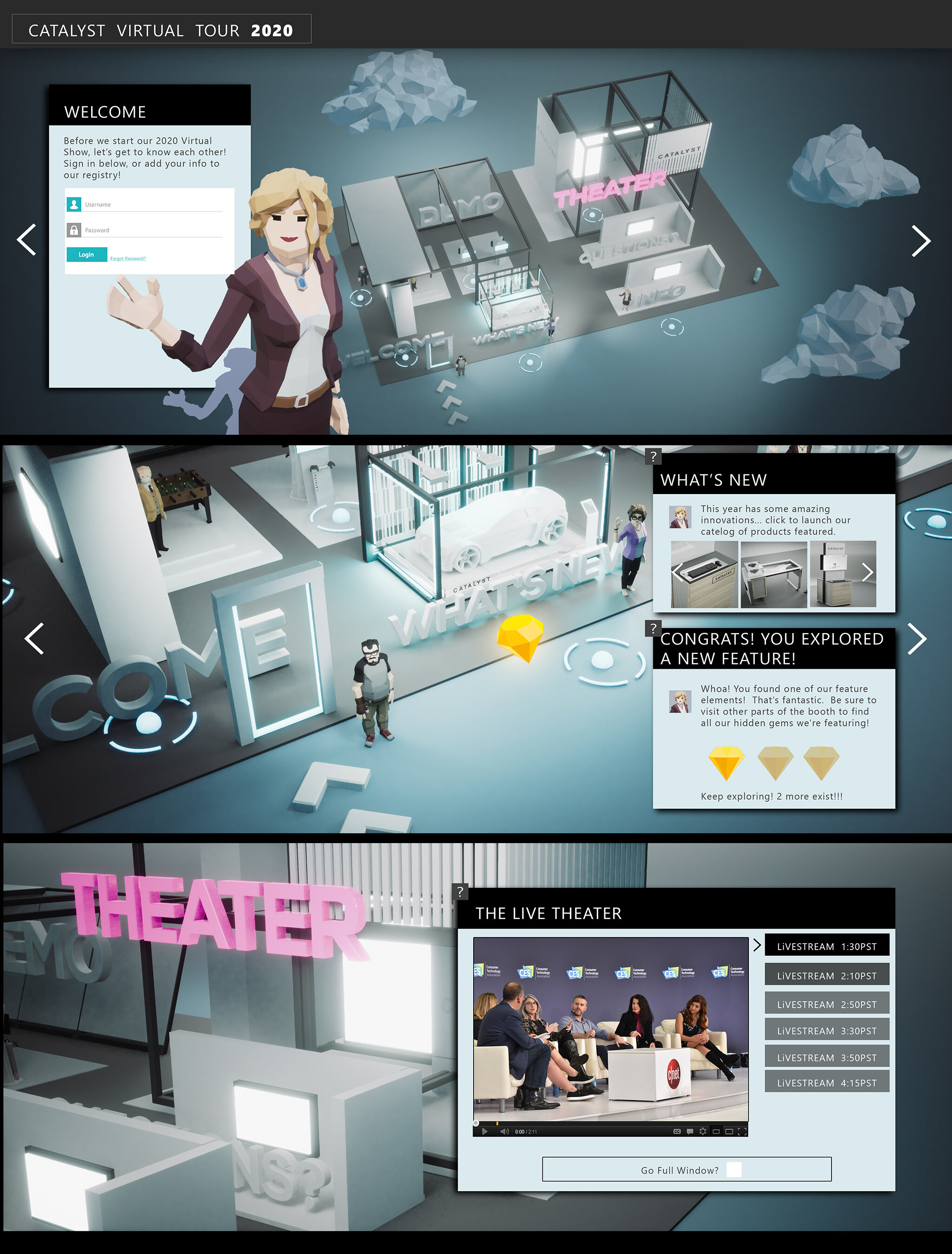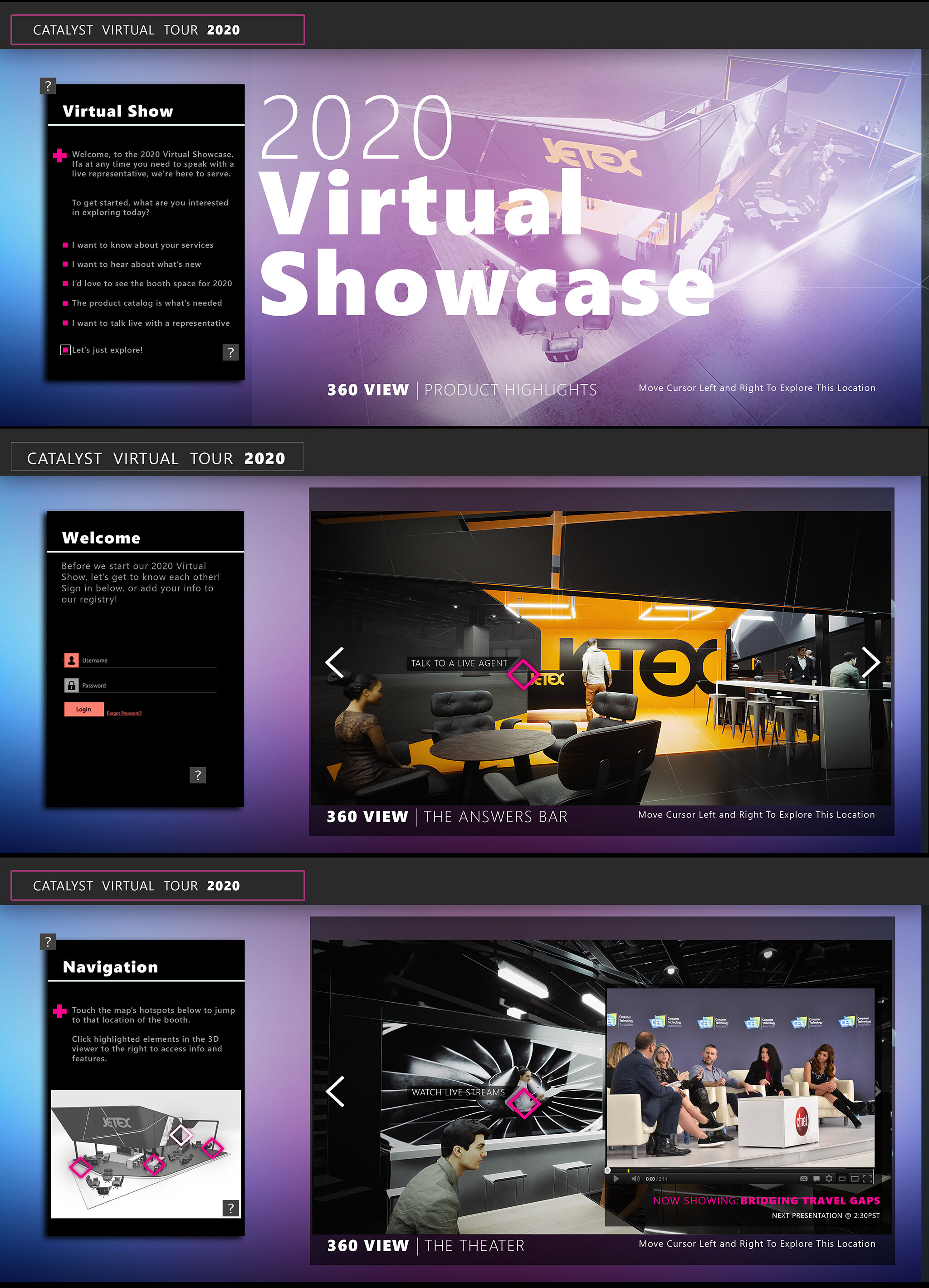When there’s no trade-shows to attend in-person… how can we visit from our desk?
While the world is looking at a lot of canceled trade-shows and conferences right now, the obvious question for a lot of trade-show companies is: where can we look for alternate revenue streams?
That’s a good question, considering the industry has completely flat-lined for months now in the US (Europe managed to begin to reopen trade-shows with fewer outbreak cases). And when you hear the disappointment from the crowds that usually attend the conferences, especially more tech-driven ones, the question becomes even more complicated, because with the deficit in conferences and trade-shows, a lot of would-be attendees have lost an import method of connecting with their industry and continuing dialogue that simply can’t be matched by phone-calls and emails alone. Many people are more or less working from the solitude of their home desks these days, and in response to this new fact-of-life,the conference-creators and exhibitors are looking to create familiar experiences that connect the audience in a similar fashion.
That said, the introduction of the “virtual trade-show” has entered into the collective consciousness of many professionals. If you haven’t received an email already from a trade-show your industry is affiliated with, announcing how “this year we’re going virtual!,” then keep checking your inbox… it’s bound to happen very soon.
So what does this mean? A virtual trade-show you can visit from your desk sounds… well… like it’s missing something. Namely the “fun” part. After-all, trade-shows and conferences are successful idea because they function off of three core concepts:
1: Get people in the same physical space, and they’re bound to talk to one another. It’s easy to ignore emails and phone calls… it’s difficult to ignore someone standing next to you, looking to connect.
2:Trade-shows get exhibitors to sign up because the crowd they are talking to is ultra targeted. You get to project your solution to their problems, onto an audience that actually wants to be there. It costs money or requires sponsorship to attend these things, so the people attending are REALLY the people you want to talk to.
3: Everyone likes a party. It’s that simple. Whether its bumping into old colleagues and friends, wacky late-night after parties, or the sheer scale of unconventional events tied to the trade-show, its an event to behold and a mini-vacation from work. That, and the conventions and trade-shows are usually held in fun cities with plenty to do, like Vegas, LA, and Orlando.
That’s a pretty daunting thing to tackle from the lonely window of computer’s monitor at home. In essence… there’s no way you’re realistically going to build a party that’s THAT fun to partake in from your laptop. Fortnite, the popular battle-royal game created by Epic, has attempted some virtual “concerts” and while, yes, it did have people attend, it is definitely not on par with… you know… an actual concert. Sorry. That’s just the truth. Sigh.
But… we can forgive the super-fun factor of events for now, and focus on unique strategies to make a DIFFERENT experience, not one that is a hollow shadow of the real thing. And we can do it by creating a somewhat familiar landscape for people to explore, so that it’s not just some lame-old email-mailer being sent out, or just a new landing page developed by marketing to promote a new product. No… we can do better.
We focus on the first two bullet points I laid out, and we try to do it with the knowledge gained from designing and building out physical spaces for real trade-show booths.
Firstly, we’re literally transplanting booth ideas, which purposely look like build-able booths into virtual experiences. The obvious question is “why make them “realistic,” when you can do anything you want in a virtual space? Simple put, it gives the attendees a space that is comfortable and doesn’t feel like a video game… it’s just easier to wrap your mind around something when you can put it into a context. Crazy designs are awesome (I’m the first to admit that) but for medical clientele and machinery companies it’s a terrifying idea to propose to their viewers something too out-there.
In general, most people who are not gamers by nature, tend to be semi-discouraged by moving through virtual spaces, as they can be clunky to navigate if they aren’t familiar with gaming controllers. We’ve removed this barrier in favor of the old point-and-click adventure schema with “virtual touch-points” the attendee can jump to, and this helps quite a bit. Additionally, many of the simple “connectivity” brought by actually physically visiting people at a trade-show can be mimicked through live-casting representatives from would-be-exhibitor companies. Designating times where staff are easily accessible to virtual meetings creates similar opportunities for remote-attendees to talk one-on-one in an ad-hoc method that isn’t as committal or restrictive in scope as a per-scheduled meeting would be.
Finally, we can provide some sense of grandeur that is missed by not attending the show… and we can still say something exciting about the brand that the usual website can’t. Building a virtual event or exhibit still conveys a sense of “what could have been”… and that’s still something exciting to people. Everyone likes to see the “behind the scenes” footage, including the “concept” that never-was… so give them that.
Check out the images below this link to an example from Catalyst Exhibits (my day-job I’m a CD at) and see how we’ve been toiling away at our version of a “virtual event.” Enjoy!
>


